The second phase of the ITU-WTSA Hackathon wrapped up on October 8, 2024, at Bharat Mandapam, uniting participants worldwide under the “AI Bharat 5G/6G Sandbox” initiative. Dr. Neeraj Mittal, Secretary of the Department of Telecommunications, inaugurated the event, which was a joint effort between the International Telecommunication Union (ITU) and the Department of Telecommunications (DoT).
The hackathon saw 88 teams register, with 12 advancing to Phase-2 after submitting proposals that met ITU standards. These teams engaged in a rigorous 40-hour in-person coding competition from October 7-8, featuring expert talks, mentoring sessions, live demos, and evaluations. Participants received guidance from ITU experts and global mentors, including professors, high-level speakers from the Department of Telecommunications, and a panel of distinguished Indian and international mentors.
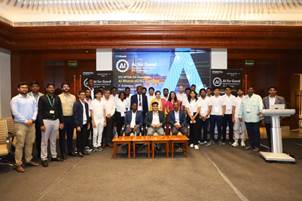
The hackathon aimed to integrate AI and machine learning into 5G/6G networks, aligning with the United Nations Sustainable Development Goals (SDGs). The objective was to tackle practical and relevant global issues using advanced technology and international standards.
Participants developed innovative solutions to address key challenges in areas such as public transportation, flood monitoring, and drone-based resource scheduling. Noteworthy projects included a 5G-enabled smart city public transportation system, a flood monitoring and alerting system, and waste management solutions for river beds. Other teams focused on reducing barriers to AI-based 6G standards, optimizing dynamic beamforming, and enhancing urban mobility through traffic optimization.
Women’s safety was also a priority, with the AuratRaksha solution providing advanced protection measures. Additionally, teams addressed issues like SIM fraud protection and real-time network reliability prediction, showcasing a wide range of applications and technological innovations.
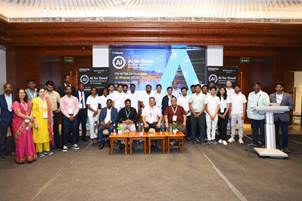
Teams were evaluated based on their preparedness, problem statement design, and the effectiveness of their solutions, with a focus on three critical dimensions: UN-SDGs, AI machine learning models, and their application to NextGen telecom networks. Participants were also provided with cloud credits worth Rs. 83,500 (USD 1,000) to train and optimize their AI models, pushing the boundaries of innovation in AI solutions for telecommunications.
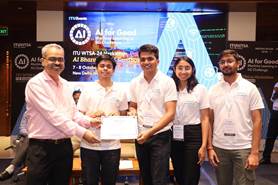
During the concluding session, successful teams were awarded ITU-WTSA hackathon participation certificates.
The competition began with 12 shortlisted teams—seven from India and five international—engaging in late-night coding marathons and online mentoring sessions over the two-day event. The hackathon was supported by an elite panel of mentors, including 12 Indian and two international experts, along with guidance from an ITU Programme Officer.
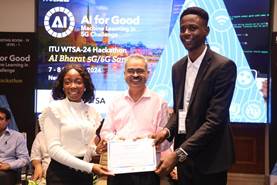
First Phase: ITU-WTSA
The first phase ran from August 7 to September 30, 2024. During this online phase, participants from diverse backgrounds, including international teams, competed in a series of challenges aimed at integrating AI/ML into 5G/6G infrastructures.
The hackathon focused on two problem statements:
AI Bharat 5G/6G Sandbox – Build Your Own AI/ML Model for 5G/6G: Teams developed AI/ML pipelines leveraging ITU recommendations, including ITU-T Y.3172 and ITU-T Y.3061, to create innovative use cases for 5G/6G.
AI Bharat 5G/6G Sandbox – Build Your Own xApp for Autonomous 5G/6G: Participants created xApps to enhance autonomous 5G/6G networks, guided by ITU experts.
The AI Bharat 5G/6G Hackathon has become a hub for innovation, bringing together students, startups, and technology enthusiasts from India and across the globe. It aims to shape the future of AI and next-generation telecommunications.
The ITU-WTSA Hackathon event is a precursor to the World Telecommunication Standardization Assembly (WTSA) 2024, a pivotal global event that will bring together more than 3,000 participants, including industry leaders, policy-makers, and tech experts from over 190 countries, representing the telecom, digital, and ICT sectors.
This event, organized by the International Telecommunication Union (ITU) and hosted by the Department of Telecommunications (DoT), will be held in New Delhi from October 15-24, 2024. Prime Minister Narendra Modi will inaugurate the event along with the India Mobile Congress 2024 on October 15, 2024, at Bharat Mandapam in New Delhi. Several parallel events will also take place alongside WTSA and IMC.
Organized every four years, WTSA is the governing conference for the standardization work of ITU, the United Nations Agency for Digital Technologies. This is the first time that ITU-WTSA will be hosted in India and the Asia-Pacific region.
ITU-WTSA 2024 provides a platform for countries to discuss and decide the future standards of next-generation critical technologies like 6G, AI, IoT, Big Data, and cybersecurity. Hosting this event in India will provide the country an opportunity to play a key role in shaping the global telecom agenda and set the course for future technologies. Indian startups and research institutions are set to gain critical insights into developing Intellectual Property Rights (IPRs) and Standard Essential Patents (SEPs).
Winning projects from Phase 1 (ITU-WTSA) in different fields:
1. Supercritical CO2 Power Cycle: The STEP Demo project in San Antonio, Texas, completed Phase 1 testing of its 10-MW pilot plant. This project demonstrated the commercial readiness of the supercritical CO2 Brayton cycle, achieving full operational speed of its turbine at 27,000 RPM and generating 4 MWe of grid-synchronized power.
2. DOE’s MAKE IT Prize: The U.S. Department of Energy awarded $5 million towards clean energy manufacturing development. Nine winners in the Facilities Track and twelve in the Strategies Track were recognized. Notable projects include:
- Anderson Clean Energy: Establishing an electrolyzer manufacturing facility in South Carolina.
- Switched Source: Setting up a manufacturing facility for hybrid inverters.
3. CellCube: Developing a manufacturing facility for vanadium redox flow batteries.
4. US Hydrogen Hub: This hub made $110 million available for developers of clean hydrogen sub-projects. The focus is on comprehensive projects that address multiple steps in the hydrogen production process.
These projects highlight significant advancements in clean energy and technology development. Are you interested in any specific project or field?
Supercritical
The supercritical CO2 (sCO2) power cycle is an advanced energy conversion technology that uses supercritical carbon dioxide as the working fluid instead of water or steam. Here are some key points about this technology:
How It Works
- Supercritical State: CO2 is brought to a supercritical state, where it exhibits properties of both a liquid and a gas. This occurs at temperatures and pressures above its critical point (31°C and 7.4 MPa).
- Brayton Cycle: The sCO2 power cycle operates on a Brayton cycle, where the supercritical CO2 is compressed, heated, and then expanded through a turbine to generate electricity.
Advantages
- Higher Efficiency: sCO2 cycles can achieve higher thermal efficiencies compared to traditional steam cycles, especially at high temperatures. This is due to the lower compression work required and the higher density of sCO2.
- Compact Design: The high density of sCO2 allows for smaller and more compact components, reducing the overall footprint and potentially lowering capital costs.
- Versatility: sCO2 cycles can be used with various heat sources, including fossil fuels, nuclear, solar, geothermal, and waste heat recovery.
- Environmental Benefits: The use of sCO2 can lead to lower greenhouse gas emissions, especially when integrated with carbon capture technologies.
Recent Developments
- STEP Demo Project: A significant milestone was achieved with the completion of Phase 1 of the Supercritical Transformational Electric Power (STEP) Demo project in San Antonio, Texas. This 10-MW pilot plant demonstrated the commercial readiness of the sCO2 Brayton cycle, achieving full operational speed of its turbine at 27,000 RPM and generating 4 MWe of grid-synchronized power.
- Future Plans: The next phase of the STEP project will reconfigure the plant to a Recompression Brayton Cycle (RCBC) and increase the turbine inlet temperature to 715°C, aiming to further boost efficiency.
Applications
- Waste Heat Recovery: sCO2 cycles are particularly well-suited for waste heat recovery applications, providing emission-free power from otherwise wasted heat.
- Renewable Energy: They can be integrated with renewable energy sources like solar thermal and geothermal, enhancing the efficiency and reliability of these systems.
The sCO2 power cycle represents a promising advancement in power generation technology, offering higher efficiency, versatility, and environmental benefits. It’s an exciting area of development that could play a significant role in the future of sustainable energy.
CO2 Power Cycle: The STEP Demo project in San Antonio, Texas, completed Phase 1 testing of its 10-MW pilot plant. This project demonstrated the commercial readiness of the supercritical CO2 Brayton cycle, achieving full operational speed of its turbine at 27,000 RPM and generating 4 MWe of grid-synchronized power.
2. DOE’s MAKE IT Prize: The U.S. Department of Energy awarded $5 million towards clean energy manufacturing development. Nine winners in the Facilities Track and twelve in the Strategies Track were recognized. Notable projects include:
- Anderson Clean Energy: Establishing an electrolyzer manufacturing facility in South Carolina.
- Switched Source: Setting up a manufacturing facility for hybrid inverters.
3. CellCube: Developing a manufacturing facility for vanadium redox flow batteries.
4. US Hydrogen Hub: This hub made $110 million available for developers of clean hydrogen sub-projects. The focus is on comprehensive projects that address multiple steps in the hydrogen production process.
These projects highlight significant advancements in clean energy and technology development. Are you interested in any specific project or field?
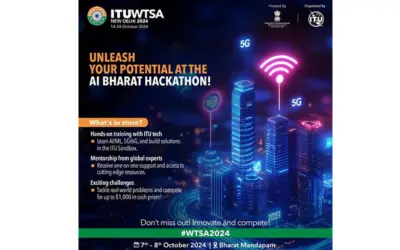

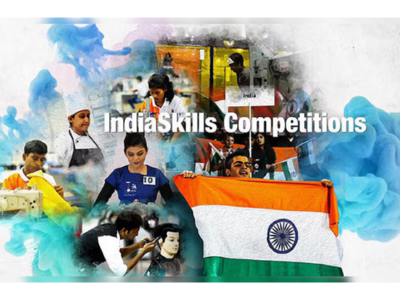

2 thoughts on “ITU-WTSA Hackathon Phase-2, the 40 hour in-person coding event”